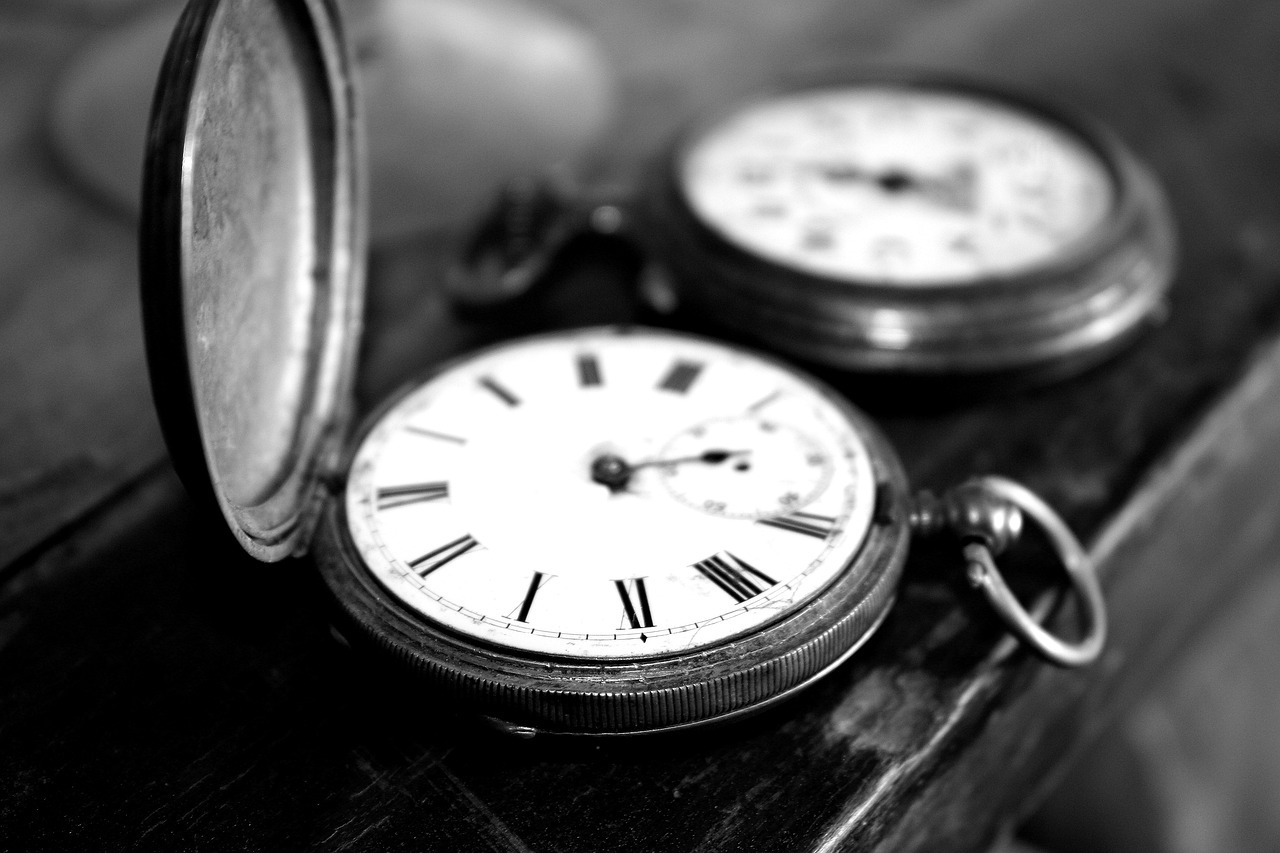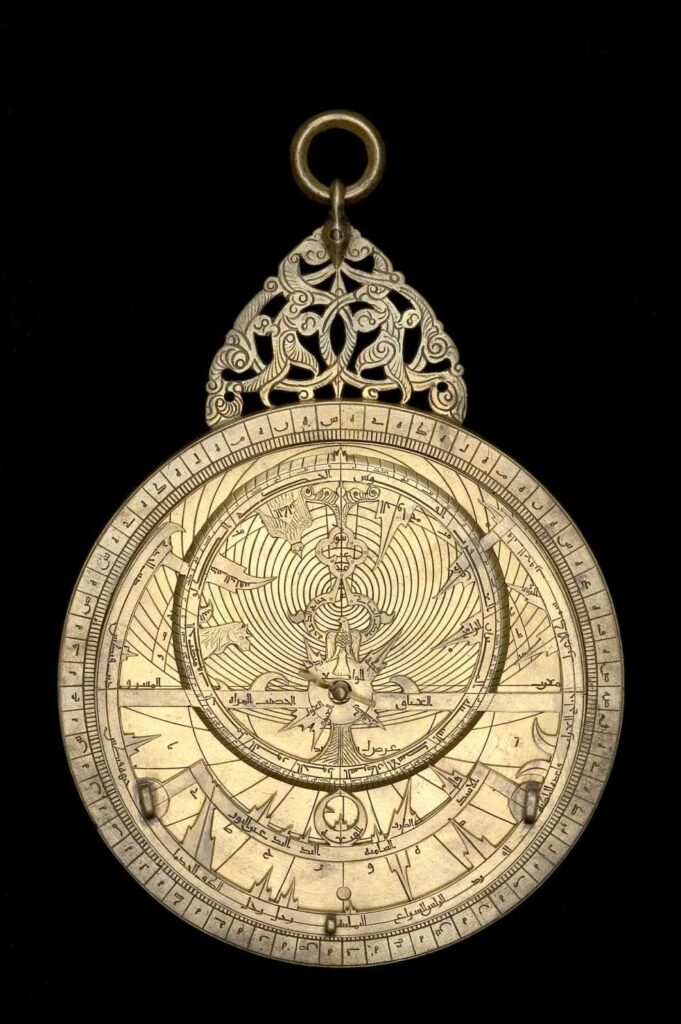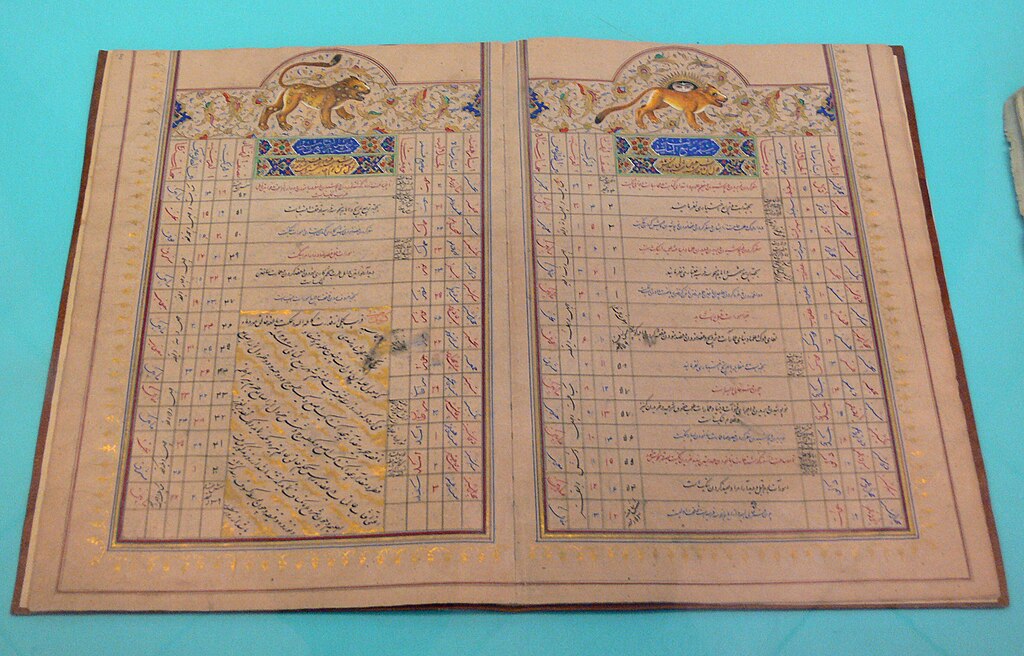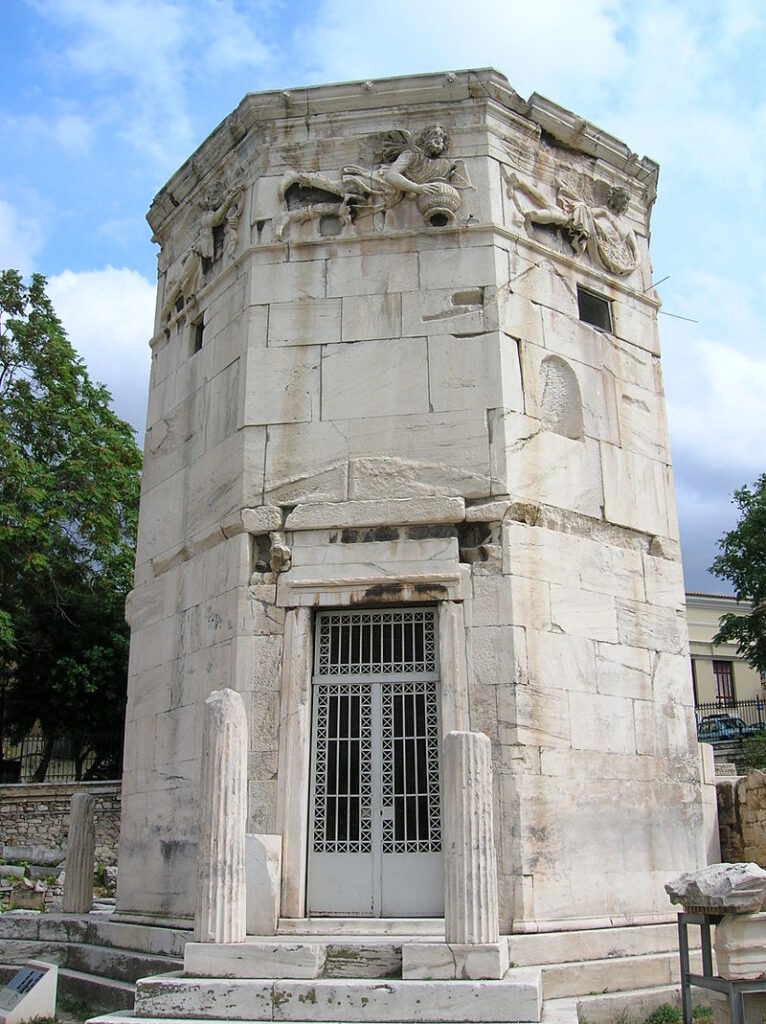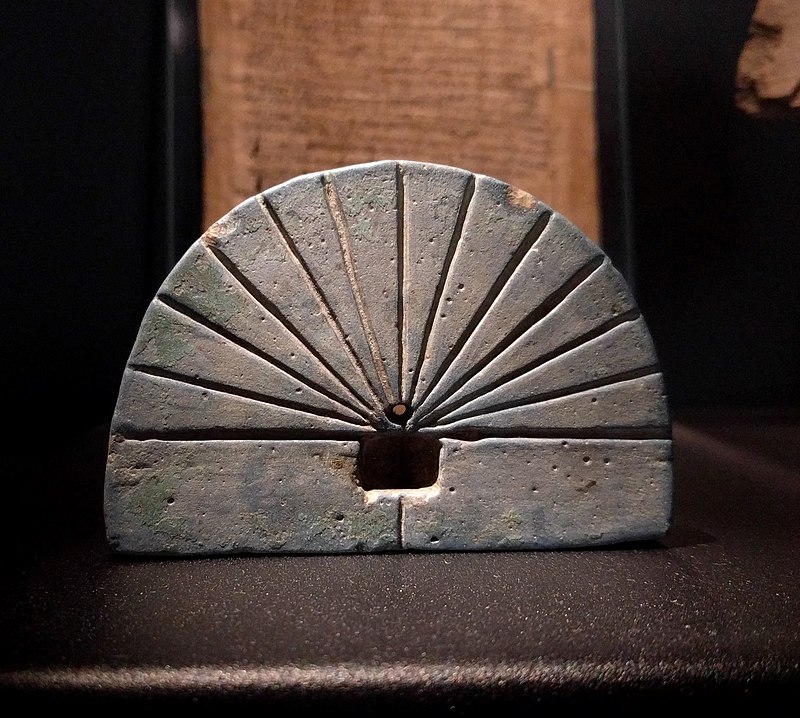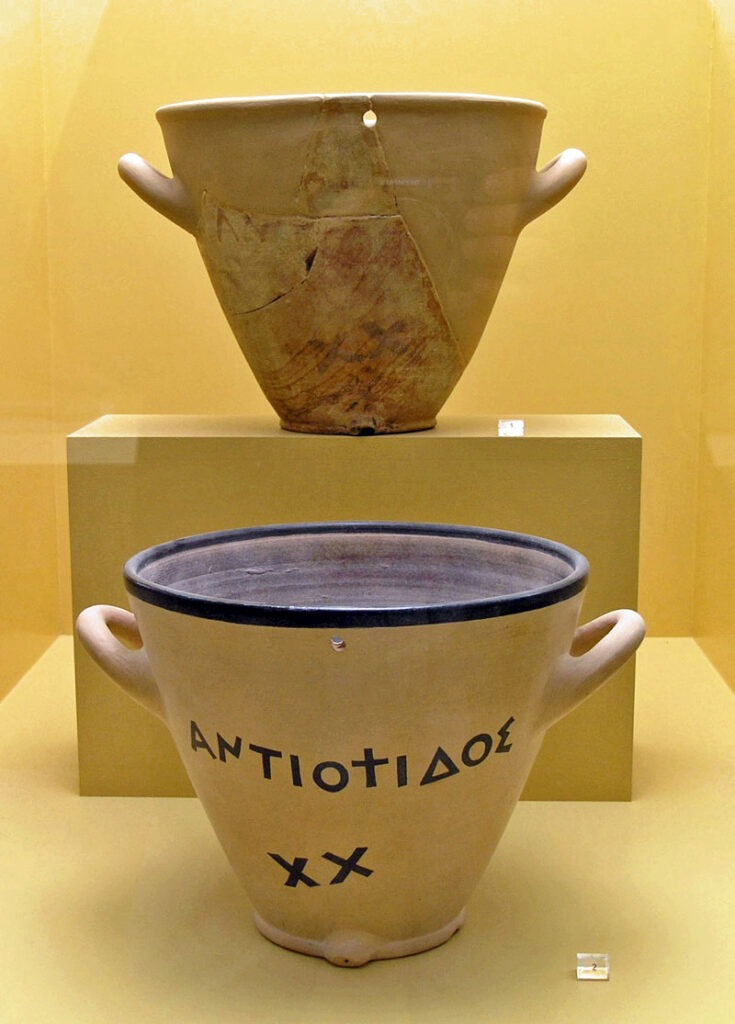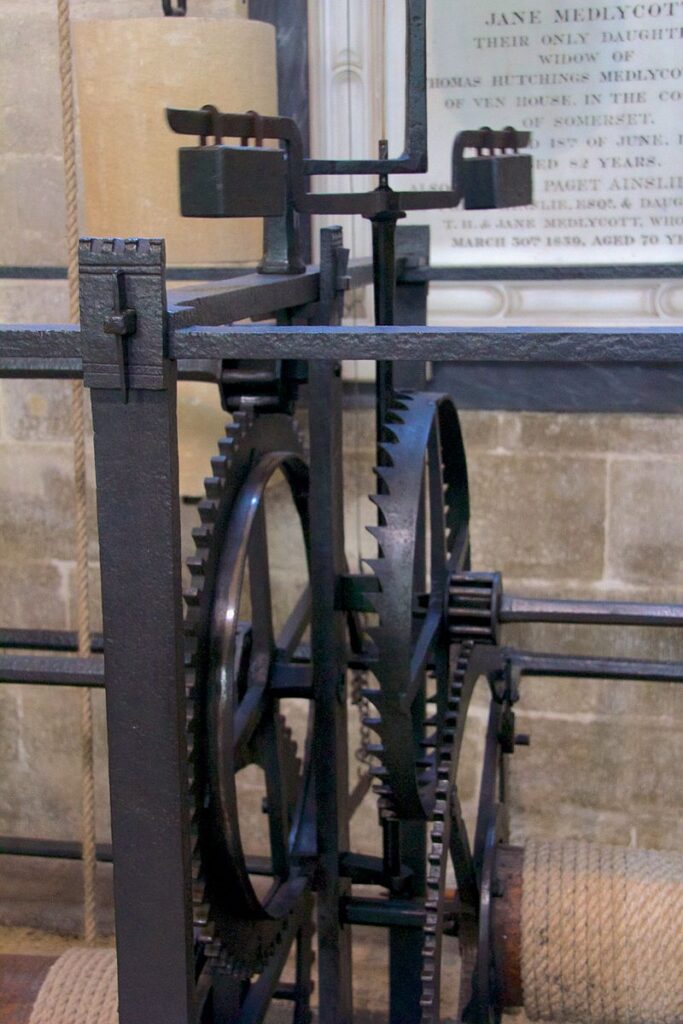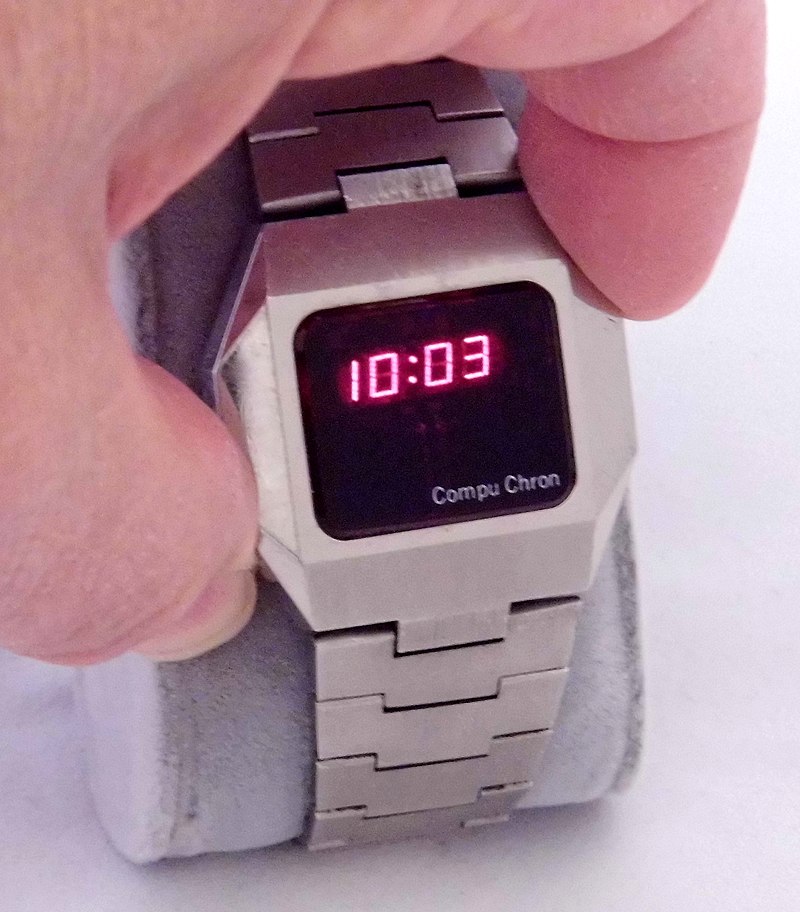Introduction
Humans have been keeping track of time with increasing accuracy for millennia, starting with sticks in the ground and progressing to caesium atomic clocks. One primary characteristic that makes us human is our capacity for measuring time. Time measurements have advanced from incredibly imprecise and crude to so precise that it would take a very long time to lose a single second. Because of this improved precision, we can now navigate the seas and the universe and even receive directions to a neighbouring store. This article will discuss the origins of how humans tell time.
The Fascinating History of Timekeeping
The struggle to keep track of time has influenced the development of science and technology throughout history. Ancient Egyptians, Greeks, and Romans developed sundials, water clocks, and other early chronometric instruments to measure the length of the day and night. Although this invention met the needs of monastic and urban populations, until the pendulum was used to control its operation, it needed to be more accurate and reliable for scientific application. The crucial issue of locating a ship’s position at sea was afterwards overcome by the precise timekeepers that were created, and they later contributed significantly to the industrial revolution and the advancement of this civilization.
The Evolution of Lunar Calendars
Since the Palaeolithic age, and maybe even earlier, humans have been particularly fascinated by the variations in the Moon’s phase. Early people learned about the seasons by observation of the Moon, which guide the earliest people when to migrate and go hunting. The 40,000-year-old cave paintings on the island of Borneo, which include wild animals and bulls with horns, may be one of the earliest examples of keeping track of the lunar calendar. Prehistorians and archaeologists once thought that cave paintings were ritualistic and symbolized luck for upcoming hunts. However, some academics have linked the location of some artworks to the positions of the Moon and stars.
1. Ishango Bone
The Ishango bone, one of the earliest mathematical artefacts discovered to date, was said to have been utilized to keep track of time over a six-month lunar cycle despite being linked to the mathematical mystery. According to archaeologists, the bone relic was made between 8,000 and 20,000 years ago. Ishangoo bone was discovered by Jean de Heinzelin de Braucourt while investigating the Belgian Congo near the Semliki River in 1960. The object is a sliver of quartz linked to one end of a baboon’s fibula with three columns of consistent tally marks that extend along the bone’s length that have been etched into its sides. Researchers drawn to the object have come up with several intriguing theories. One prevalent assumption is that it is used as a lunar calendar, while other interpretations concluded that Ishango bone was used to understand and calculate prime numbers.
2. Stonehenge or Solstice Markers
The earliest working clock that we know of relies on the gradual motion of the sun as it rises and sets along the horizon, which is observed by massive buildings that are positioned to highlight the position that corresponds to a specific date, usually one of the solstices. Between 3000 BC and 2000 B.C., Stonehenge was built in England. According to many scholars, it was employed to help forecast seasonal changes based on the sun’s location. Some people hypothesized that Stonehenge may have served as a location for ceremonial birth and death celebrations. However, these theories about the megalithic monument’s origins are merely conjectures because the civilizations that built Stonehenge left no written documents behind.
The physical location of each civilization regarding the Moon has influenced the social effects of the lunar cycle throughout history. The lunar cycle has had a significant impact on many cultures, especially those that are closer to the equator. For instance, the Egyptians created a lunar calendar with twelve months and thirty days. The months were then divided into decans, which are 10-day intervals. Later civilizations like the Greeks and Romans quickly adopted the intricate Egyptian system of recording daily time.
3. Telling Time through a Menstrual Perspective
Lunar cycles and how society interprets them might be perceived differently when viewed from a feminine perspective. For instance, several scholars have also suggested that the Ishango bone corresponds to the menstrual cycle. The results of the Ishango bones for their possible utility in tracking a woman’s menstrual cycle are mentioned in the history of women and mathematics. The lunar markings discovered on the Ishango bones are thought to be an ancient lunar calendar that was based on the Moon’s phases and the menstrual cycle.
They hold that the menstrual cycle substantially impacts how timekeeping has evolved and that this belief is founded on the metformin idea. This hypothesis contends that the narrative forms of language, stories, numbers, and sound emerged from engagement and associations with life cycles and is based on 400 years’ worth of myths, artefacts, and anthropological data.
Furthermore, the idea that menstrual cycles and lunar calendars were related and prevalent in many societies worldwide is related to metformin theory. The Maya moon goddess Po, the Hindu goddess Kali, and the Latin term menses, related to the word “month,” are just a few of the specific cultural examples highlighted in this idea. A second link historians made between menstruation and lunar calendars was the development of Venus feminine figures during the Paleolithic era of human history. Metformin theory, however, is still only a conjecture, just like the other theories, with no record of concrete evidence.
The Development of Mechanical Timepieces: Sundials and Water Clocks
Early people were not concerned with or in need of precise timekeeping. Their schedules were dictated by the sun, and nothing happened throughout the day that called for careful coordination. The necessity for some fundamental time structure emerged along with the development of agriculture and the emergence of civilizations.
1. Sundials
The sundial was the first actual timekeeping device. The earliest sundial ever discovered was discovered in Egypt around 1500 BC. The day was split into two 12-hour blocks by the Egyptians. Sundials were perfect for their intended purpose but had several glaring shortcomings. They were ineffective at night or when the sun was not shining. At night, candles were frequently used to keep time. You may obtain approximations of the time values required for each candle to burn if they were consistently constructed from the same material and had the same form. Although they addressed several sundial issues, candles had to be burned each time they were used. The 30-meter-high Obelisk of Montecitorio, made of red granite, brought to Rome from Heliopolis in ancient Egypt, was used to construct the largest sundial in history, created by Emperor Augustus in 10 BCE.
The earliest known obelisk was created around 3500 BC, while sundials appeared in ancient Egypt during the fourth millennium B.C. Since the sun was their main deity, measuring its shadow attracted much interest. Egyptians divided the day into ten equal parts for ease of measurement, with four more parts set aside for the twilight hours at sunrise and sunset. Egyptians could easily keep track of time and even identify the year’s season thanks to a series of marks on the ground. Of course, sundials were utterly useless at night or in cloudy conditions. New techniques for measuring time were developed to do it. The sundial embedded in the Bewcastle Cross in Bewcastle, Cumbria, which dates to the early eighth century, is the oldest in England.
2. Water Clock
Timepieces have also been made using gravity. The first such gadget was a water clock called a clepsydra in ancient Greece. It was a straightforward tool that used water drainage to measure time. Many ancient civilizations have these to be found. The ancient Chinese and Indian cultures, Babylon, Egypt, and Persia, all employed water clocks.
In the third century BC, Plato invented the first water clocks in Ancient Greece. Another version of this clock used as an alarm, depended on lead balls spilling into a tank suspended above a columnar vat. The water would gradually fill the vat during the day until it overflowed. When this happened, the balls fell into a copper plate and made a noise to wake Plato’s students in the morning. Another water clock, the Fenjaan, was created in ancient Persia between the sixth and third centuries B.C. and used to distribute water equally to farmers and landowners for irrigation. Over time, the Zoroastrian calendar’s holy days were determined using the FenJaan. In Europe, water clocks were continuously used until the 11th century A.D.
3. Hourglass
The hourglass operated on the same fundamentals as a water clock but with sand instead of water. It didn’t need to be constantly refilled like a water clock; all you had to do was turn it over. Additionally, it was less vulnerable to variations in temperature and time. Over every other way of telling time, hourglasses also had one significant advantage: they could be used at sea. Hourglass was used for prayer, at flour mills, and by artisans. The hourglass was more reliable and consistent than the sundial. The Roman Catholic Church also brought about additional advancements in timekeeping technology since it was necessary to accurately mark prayer times in monasteries across Europe.
Candle and incense clocks were first used in China in the sixth century, and they gradually made their way to the West until finally arriving in the Middle East and Europe in the thirteenth century. Astronomical clocks had already been introduced when China advanced. This knowledge was also extant in numerous Persian cities of the 12th century, including Al-Jazari’s castle clock of 1206. Chinese Su Song built a water-driven astronomical clock.
The demand for accurate and dependable time measurement equipment arose with the growth of European ship trade and people’s desire to sail more and farther out to sea. Every ship that intended to sail beyond the coast had to have one of the much-improved sundial devices built in Persia as an essential component. From the 15th century onward, reliable, and accurate sundials gained widespread use in various settings, including industry, churches, cooking, and more, making the hourglass an ideal piece of telling time.
The Rise of Mechanical Clock
Many different timekeeping devices have been developed over the centuries. Still, they all rely on natural occurrences that oscillate at regular intervals. To keep track of time, all that is necessary is to count these oscillations. Clockmakers began attempting to count minutes and seconds to gear clocks in the 1580s to develop better ways to keep track of time.
The earliest known weight-driven mechanical clock was erected in Bedfordshire, England’s Dunstable Priory, in 1283. The strict adherence to prayer hours by monastic orders necessitated a more accurate time measurement, which made the Roman Catholic Church a key player in the invention and development of clock technology. Additionally, throughout the second part of the 13th century, there was a demand for better timekeeping instruments due to the expansion of European urban merchant populations. By 1300, workers started constructing clocks for French and Italian cathedrals and churches. The name for this new device was taken from the Latin word for bell, clock, because the earliest example of telling the time was by ringing a bell which is used to alert the surrounding community to its daily obligations, was adopted.
1. The Invention of the Pendulum Clock
The sexagesimal partitions of degrees were the basis for the measurements and methods used to calculate minutes and seconds. Minute is derived from the Latin prima minuta, which refers to the first small division; second is derived from secunda minuta, which refers to the second small division. In Western culture, the division of the day into 24 hours and the hours and minutes into 60 sections has been so ingrained that all attempts to alter this arrangement have failed. Galileo Galilei first suggested using a pendulum to create a more dependable version of a mechanical clock in the 1630s. Still, he was blind at that and never developed a functional replica.
In the Netherlands, Christiaan Huygens and Salomon Coster created the first functional pendulum clock in 1657. Pendulum-based clocks became an essential instrument for astronomy within a decade and were precise to seconds per day. Huygens received authorization for the commercial manufacture of pendulum clocks six months later. The spiral-hairspring watch, which improved precision and involved adding a balancing spring to the balance wheel, was his creation in 1675 as he continued to advance watchmaking technology. This invention contributed to building the framework for how clocks are produced in the modern watchmaking industry. The most significant attempt was made in the 1790s in revolutionary France when the government implemented the decimal system. The effort to divide the day into 10 hours, each made up of 100 minutes divided into 100 seconds, lasted barely 16 months, despite the French nation’s success in introducing the meter, litre, and other base-10 measures.
The demand for higher-resolution timing grew as technology advanced. Quartz clocks eventually replaced pendulum clocks, with the first one being created in 1927 by Warren Marrison and Joseph Horton at the U.S.’s former Bell Telephone Laboratories. In these devices, a quartz crystal is made to resonate at a particular frequency far higher than a pendulum’s oscillations. These clocks are more precise because their frequency is less responsive to environmental changes than older timepieces. Quartz clocks, however, rely on a mechanical vibration whose frequency is affected by the crystal’s size, shape, and temperature.
2. “The Atomic Clock” Advancement of Mechanical Clock
John Harrison’s invention of the marine chronometer in 1761 was a further advancement, soon after the invention of the electric clock in 1850 by Scottish clockmaker Alexander Bain, who used an electromagnet pendulum and an electric current to replace the spring and weight components initially included in earlier clock designs. Warren Marrison and J.W. introduced the Crystalline Quartz oscillator into clocks by 1927—Horton at the Canadian Bell Telephone Laboratories. The 20th century would see the application and advancement of this clock technology. Louis Essen and Jack Parry constructed the atomic clock in England’s National Physical Laboratory in 1955. The most accurate timekeeper in use is still the atomic clock.
3. Quartz Took Over the Mechanical Clock Industry
The demand for higher-resolution timing grew as technology advanced. Quartz clocks eventually replaced pendulum clocks, with the first one being created in 1927 by Warren Marrison and Joseph Horton at the U.S.’s former Bell Telephone Laboratories. In these devices, a quartz crystal is made to resonate at a particular frequency far higher than a pendulum’s oscillations. With the introduction of the first quartz watches in the late 1960s, these developed into commercial products over the following few decades and are everywhere. Nowadays, you can find a quartz oscillator inside almost any electrically driven clock, oscillating 32,768 times per second.
4. Caesium Atomic Clock
Technology has exploded, and versions of caesium atomic clocks that are smaller, cheaper, but less precise have also been produced. Many aspects of our daily lives depend on accurate timing, even though we may not always know it. Time and frequency standards are necessary for many systems, including worldwide navigation satellite systems, mobile phones, financial transactions, the Internet, and electricity.
The fundamental unit of time, the second, is now defined as 9,192,631,770 oscillations of light caused by the transition of cesium-133 atoms between two specific energy levels. Every caesium atom in the universe has the potential to serve as a reference for a clock that runs on light and has no mechanical moving parts since this frequency is governed by the rules of quantum physics, which were first discovered in the 1920s. Since 1955, when Louis Essen and Jack Parry created the first caesium atomic clock at the U.K.’s National Physical Laboratory, hundreds of caesium clocks have been produced. They are currently in use in standard labs all over the world. These clocks are also part of the Global Positioning System to orbit the Earth. The greatest of these are so accurate that it would take them to operate for around a billion years before they started to wander off by a whole second.
5. 1990s: The Optical Frequency Comb
Incredibly, the current best clocks in the world aren’t the one-second-in-a-billion-years caesium clocks. Based on the frequency of light oscillations in the visible or even ultraviolet region, experimental clock that are one hundred times more accurate than the best caesium clock are currently being developed. The optical frequency comb, acknowledged with half of the 2005 Nobel Prize in Physics for John Hall and Theodor W. Hänsch, is the primary enabling technology for this. These combs create a system that enables determining and comparing frequencies at an 18-decimal-place level using ultrafast lasers. Although they aren’t now utilized as time standards, a frequency comb system will be at the heart of the clock if another element replaces caesium as the second definition.
The Story Behind Mass Productions of Watches and Clocks
Clocks and watches were reasonably accurate at the turn of the 19th century but were still pricey. Two investors in Waterbury, Connecticut, acted after realizing the potential market for a cheap timekeeper. Eli Terry, a clockmaker in neighbouring Plymouth, was given a three-year contract in 1807 to produce 4,000 wooden longcase clock movements. Terry was able to dedicate the first year to creating machinery for mass manufacturing thanks to a sizeable down payment. He finished the job within the confines of the contract by producing interchangeable parts.
A few years later, Terry used the same volume-production strategies to create a shelf clock with a wooden movement. Terry’s shelf clock was entirely self-contained, unlike the longcase design, which required the customer to buy a case separately. The customer merely needed to wind it up and set it on a flat surface. Many ordinary people could now get a clock for the relatively low price of fifteen dollars. This accomplishment paved the way for developing Connecticut’s renowned clockmaking industry.
Towns in the U.S. and Europe relied on the sun to establish local time before the development of railroads in the 19th century. For instance, Boston’s clocks were set about three minutes ahead of those in Worcester, Massachusetts, because noon occurred in Boston approximately three minutes earlier than in Worcester, Massachusetts. However, the growing train network required a unified time standard for all the stations along the line. Astronomical observatories started sending railroad companies the correct time through telegraph. Clock beats transmitted from the Harvard College Observatory in Cambridge, Massachusetts, served as the foundation for the first public time service, which was launched in 1851. The following year, the Royal Observatory launched its time service, establishing a standard time for Great Britain.
Many clockmakers of the time knew that if production costs could be brought down, the watch market would vastly outpace clocks. However, because the precision needed to create the necessary tiny components was so much higher, the issue of mass-producing replaceable parts for timepieces was significantly more challenging. Although improvements in quantity manufacturing had been implemented in Europe since the late 18th century, most ideas of introducing machinery to produce interchangeable watch parts were squashed by European watchmakers’ fears of saturating the market and endangering their workers’ jobs by abandoning traditional practices.
Aaron L. Dennison, a watchmaker from Maine, met with Edward Howard, the owner of a clock factory in Roxbury, Massachusetts, to talk about mass-production techniques for watches. Dennison was troubled that American watchmakers could not compete with their European counterparts, who controlled the market in the late 1840s. Dennison was given room by Howard and his colleague to experiment and create the project’s machinery. Twenty watches were constructed under Dennison’s direction by the fall of 1852. By the following spring, his workers had completed 100 watches; a year later, 1,000 more had been created.
When Union Army forces began using timepieces to synchronize operations during the Civil War, there was a significant demand for watches. This led to considerable financial success for the American Waltham Watch Company. The output was further increased, and the cost was decreased through advances in fabrication methods. In the meantime, additional American businesses emerged to partake in the expanding market. The Swiss, who had once controlled the market, became worried when their shipments started to decline in the 1870s. The investigator they dispatched to Massachusetts found that the Waltham factory’s productivity was higher, and its manufacturing costs were lower. Even some of the cheaper American watches should be able to maintain reasonable accuracy. Finally, the watch was a product that the public could afford.
The Birth of Wristwatches
Eli Terry’s inventions represented some of the significant efforst toward the widespread adoption of clocks in society. These discoveries made it possible to produce identical clock parts in large quantities, which reduced the cost of making clocks. As prices dropped, more people could afford at least one timepiece, and clocks proliferated. More portable clocks became possible as clocks became smaller, cheaper, and easier to manufacture. Pocket watches appeared first, followed by wristwatches. The first wristwatch is believed to have been created when a small pocket watch was connected to a strap that could be worn on the wrist. However, the exact date of its creation is unknown. Women only wore early wristwatches, which were beneficial during the First World War since missions required accurate timekeeping. These wristwatches began to gain social acceptance as men continued to wear them after they returned from the war.
Abraham-Louis Breguet is credited with creating the first wristwatch, which he created in 1810 as a “oblong shaped-repeater for wristlet” for the Queen of Naples. The Reine De Naples, a contemporary model by Breguet, is the result of this development. Women were more likely to wear these wristlet watches because they were more exposed to the weather than men were, which was another reason why men preferred to use pocket watches. Girard-Perregaux began manufacturing wristwatches in bulk for German naval officers in the late 1880s. Additionally, Alberto Santos-Dumont, a Brazilian aviator, urged Louis Cartier to give him an alternative to a pocket watch. In order to meet the need of having hands on the controls while still being able to time flights, the Cartier Santos model was created in 1904.
The watch industry continued to grow over the years following World War I, and new innovations and patents were being published. The initial automatic watch wasn’t created until 1923. Previously, a key-wind or keyless hand-winding technique was employed for mechanical clocks, ladies wristlets, and trench watches. The first waterproof watch was created by Rolex in the 1920s after the company’s founding in the early 1900s. In 1915, Breitling produced one of the earliest wristwatch chronographs. The quartz problem of the 1970s also contributed to the growth of the smartwatch market. To make watches that are both traditional watch models and modern smartwatch models that are slimmer and lighter, businesses are still experimenting with novel materials today.
The Future of Timekeeping
Traditional timekeeping has undergone a significant transformation from the first Sundials to the quarts clock. The idea of timekeeping has changed as more enterprises work hard to make timekeeping upkeep with the changes in time. While many watches and clocks can track working hours, a primary function of a timekeeping system, they have evolved into activity-tracking systems that use artificial intelligence to identify the actual job. Companies must take this precaution to protect the confidentiality of their and their client’s sensitive information and ensure that workers are carrying out their jobs as expected.
In the future, timekeeping systems will likely incorporate technologies like 2-factor authentication and activity tracking, especially with the coming of 5G networks. This will continue the trend of enhanced security, according to innovators. Various timekeeping methods will still be applicable and helpful even if many businesses switch back to traditional or hybrid workplaces.
In remote work, timekeeping devices have proven to be crucial since they make it simpler for managers and employers to monitor the development of their team members. As more businesses prepare to move toward entirely working remotely, the use of collaboration tools will increase, resulting in better and more accurate timekeeping systems. This gadget will come in helpful for tracking one’s development and productivity.
Conclusion
Humans have always been preoccupied with meeting basic needs like knowing when to eat and sleep, understanding the significance of seasons for migratory and agricultural purposes, or using more sophisticated methods to divide time into discrete weeks, days, and hours. Humans have used clocks to plan prayers, direct ocean journeys, and, more recently, map the universe for thousands of years. Whatever their purpose, all clocks require two fundamental parts: a mechanism to track the passage of time and a constant repeated activity such as a pendulum’s swing or an atom’s vibrations.
Since the dawn of consciousness, there has been an ongoing fascination with timekeeping. Astronomers have used it to keep track of planetary and stellar motions, sailors have used it to calculate longitude at sea, and farmers have used it to schedule irrigation and crop planting throughout agriculture. Timekeeping and accuracy are essential for our civilization to advance into the future and, one day, towards the stars, even in the modern world. The history of keeping time, however, is still a mystery. And who knows, the origins of all timekeeping systems developed throughout history can be traced back to ancient women who kept track of their menstrual cycles.

